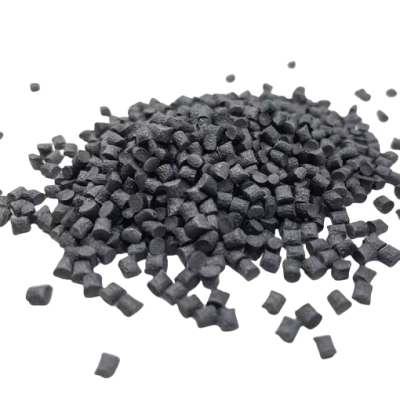
Home News Company news Conductive Plastics…

Curious if plastics can conduct electricity? Let's dive into conductive plastics—what they are and how they work.
How Do Conductive Plastics Work?
There are two core conductivity mechanisms:
1. Filled Conductive Plastics
These blend ordinary polymers with conductive fillers (like metal powders, carbon nanotubes, graphene, or carbon black).
The magic happens when fillers form a connected network, allowing electrons to flow:
• Example: Adding carbon black to TPU creates a particle network for electron pathways. In PC with metal nanoparticles,
contact points between particles act as electron highways.
2. Intrinsically Conductive Polymers (ICPs)
These plastics conduct naturally through their molecular structure:
• Key principle: Conjugated double bonds (think polyacetylene, polyaniline, polypyrrole) let π-electrons delocalize along the
chain. When an electric field is applied, these electrons move directionally, generating current.
Why Choose Each Type?
• Filled plastics: Cost-effective, easy to process, ideal for industrial uses.
• ICPs: Lighter, more flexible, perfect for high-tech electronics like flexible displays.
Can Conductive Plastics used in injection moulding?
Yes, they can be injection-moulded:
• Filled plastics (primary choice): ABS, PC, PE, PP mixed with carbon black, CNTs, or metal powders. Their filler-resin compatibility
makes molding straightforward.
• ICPs (with modifications): Materials like PANI or PPy need blending with other resins to improve flow—pure ICPs often use solution
casting due to poor melt flow.
Real-World Uses
• Electronics casings: Antistatic, EMI-shielding ABS with 15% carbon black (conductivity ~10⁻³ S/cm) for phones and laptops.
• Sensors: CNT/TPU composites molded into pressure-sensing insoles, where deformation changes conductivity.
Injection molding suits most conductive plastics, especially filled types. It has been widely applied in mass production for electronics,
automotive and other fields.
Name: Cynthia
Mobile:+86 15957647269
Email:sales@solrjetmould.com
Add:NO.19,HuiMin Road, Economic Development Zone, Huangyan 318020, Taizhou City, Zhejiang Province, China